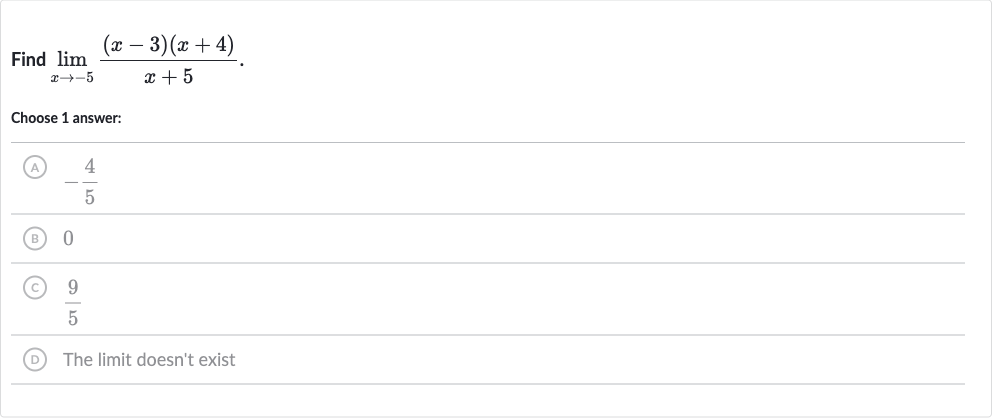Full solution
Q. Find Choose answer:(A) (B) (C) (D) The limit doesn't exist
- Identify Form of Limit: Identify the form of the limit.We need to find the limit of the function as approaches . Let's substitute with to see if the function is defined at that point.
- Check for Indeterminate Forms: Perform the substitution to check for indeterminate forms.Substituting into the function gives us:This results in a division by zero, which is undefined. However, since we are dealing with a limit, we need to check if the function approaches a specific value as approaches .
- Simplify Expression: Simplify the expression to see if the limit can be determined.Since the denominator becomes when , we have an indeterminate form of the type . This means we can apply algebraic manipulation to simplify the expression and possibly eliminate the indeterminate form.
- Factor Out Common Factor: Factor out the common factor in the numerator and denominator.Notice that the numerator can be rewritten as , and we can see that is a common factor in the numerator and denominator. However, since we are not actually factoring out from the numerator, we realize that there is no common factor to cancel out with the denominator. This means we cannot simplify the expression by canceling out the term.
More problems from Power rule
QuestionGet tutor help
QuestionGet tutor help
QuestionGet tutor help
QuestionGet tutor help
QuestionGet tutor help

